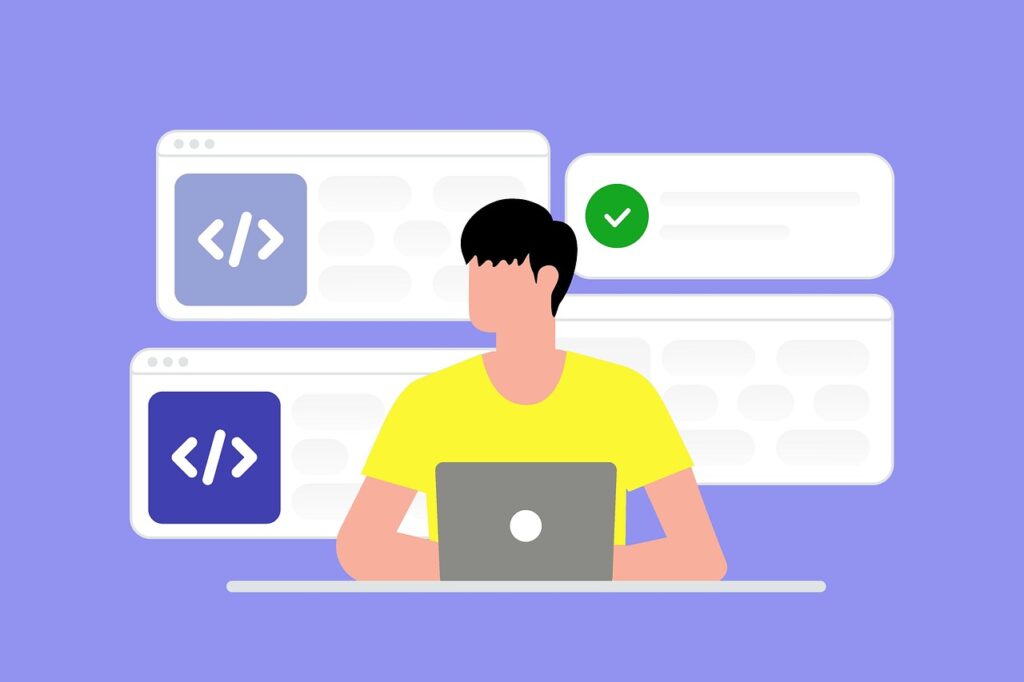Introduction
Web development is the process of creating websites and web applications that are functional, attractive, and user-friendly. Whether you’re a business owner, a freelancer, or an aspiring developer, understanding web development is essential for success in today’s digital world. This article covers the basics of web development, the key technologies used, and the step-by-step process to build a website from scratch.
What is Web Development?
Web development refers to designing, building, and maintaining websites. It consists of two main parts:
- Front-end development: The visible part of the website that users interact with.
- Back-end development: The server-side logic and database management that make the website work.
Types of Websites
There are different types of websites, each serving a unique purpose:
- Static Websites: Simple pages with fixed content, like portfolios and company info pages.
- Dynamic Websites: Sites that update content dynamically, like blogs and social media platforms.
- E-commerce Websites: Online stores that allow businesses to sell products and services.
- Web Applications: Advanced platforms like Google Docs and online banking portals.
The Web Development Process
1. Planning and Research
Before starting development, it’s important to:
- Define the purpose of the website.
- Identify the target audience and competitors.
- Choose a domain name and a reliable hosting provider.
2. Designing the Website
A well-designed website improves user experience. Key aspects include:
- Wireframing: Creating a visual blueprint of the website layout.
- UI/UX Design: Focusing on usability and aesthetic appeal.
- Responsive Design: Making sure the website works on all devices.
3. Front-End Development
Front-end development involves coding the website’s appearance and functionality using:
- HTML: Creates the structure of web pages.
- CSS: Styles and designs the layout.
- JavaScript: Adds interactivity and animations.
- Frameworks: Popular choices include React.js, Vue.js, and Bootstrap.
4. Back-End Development
The back-end handles data and server logic. Common technologies include:
- Programming Languages: PHP, Python, Ruby, Node.js.
- Databases: MySQL, MongoDB, PostgreSQL.
- APIs: Enable communication between different applications.
5. Testing and Debugging
Testing ensures that the website functions smoothly. Important tests include:
- Functionality Testing: Checking if all features work properly.
- Performance Testing: Optimizing speed and load times.
- Security Testing: Protecting against cyber threats and hacking attempts.
6. Deployment and SEO Optimization
- Deploy the website on a hosting server.
- Set up an SSL certificate for security.
- Optimize for SEO (Search Engine Optimization) to improve search rankings.
7. Maintenance and Updates
- Regularly update the website with fresh content.
- Fix bugs and improve performance.
- Analyze user data to enhance the experience.
Essential Features of a Great Website
- Fast Load Time: Optimize images and use caching.
- Mobile-Friendly Design: Ensure compatibility with all screen sizes.
- SEO Best Practices: Use relevant keywords and meta descriptions.
- Security Measures: Install firewalls and SSL encryption.
- Easy Navigation: Make it simple for users to find what they need.
Conclusion
Web development is a valuable skill that enables businesses and individuals to create an online presence. Whether you’re building a personal blog, an e-commerce store, or a corporate website, following the right process ensures success.
Want to create a website? Let’s bring your ideas to life! 🚀





